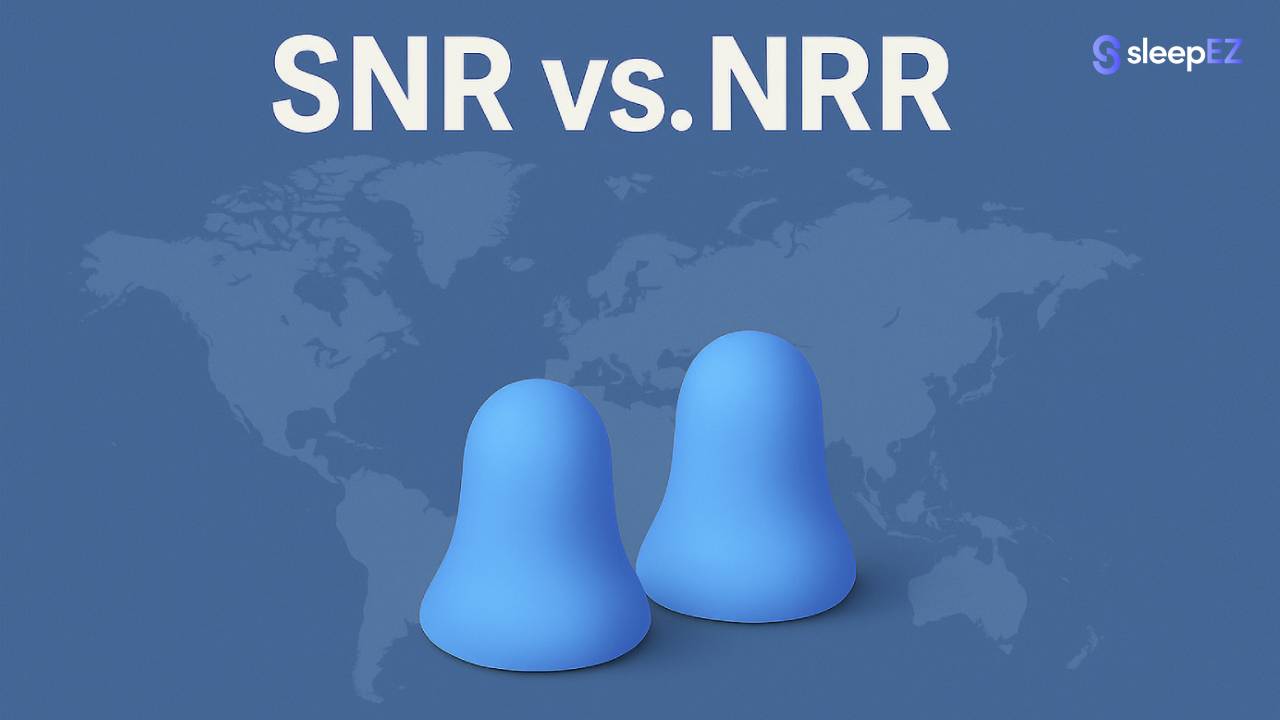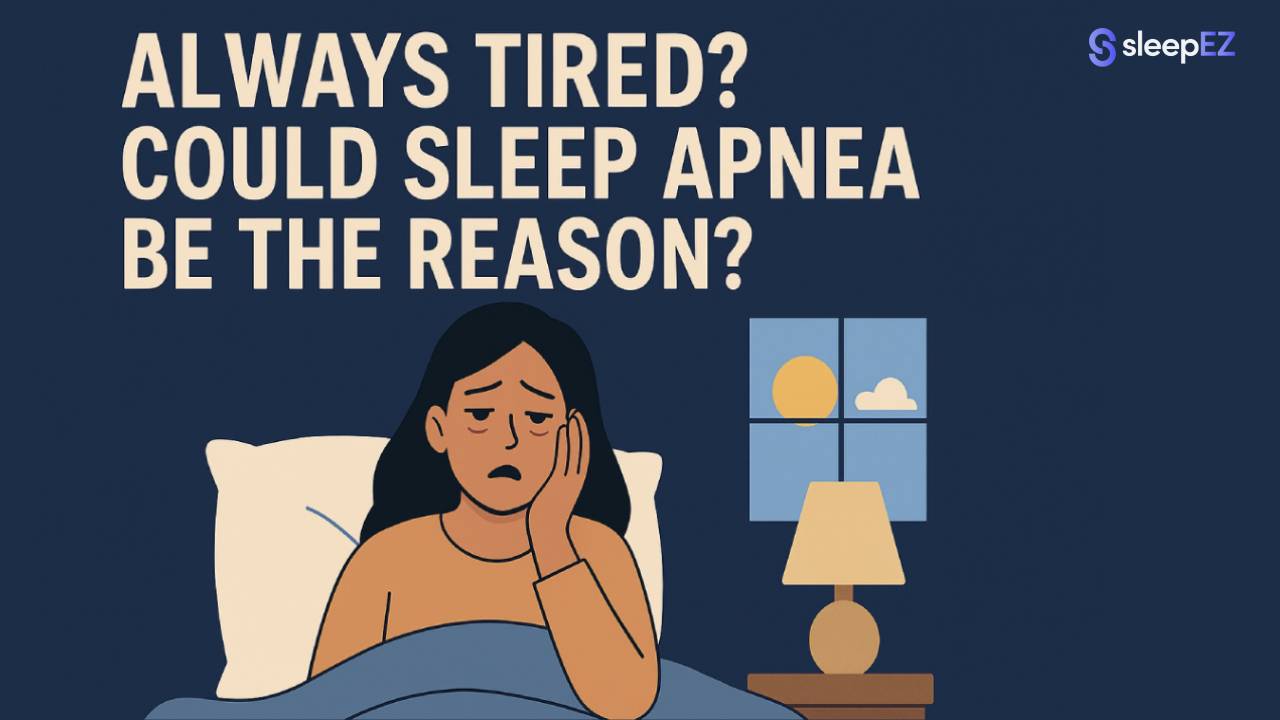When shopping for earplugs or hearing protection, you'll see two main ratings: SNR and NRR. Both measure how many decibels of noise a device can block, but they use different testing methods.
These numbers might seem confusing at first, especially when the same product shows different ratings depending on where it's sold.
This guide explains the key differences between SNR (Single Number Rating) and NRR (Noise Reduction Rating).
Understanding these ratings helps you choose the right protection for your needs, whether you're dealing with a snoring partner, noisy neighbors, or loud work environments.
What Is SNR (Single Number Rating)?
SNR is the European Union's standard for measuring hearing protection effectiveness. You'll see it on products sold in the United Kingdom and across Europe.
This rating system was developed to give consumers a simple way to compare different hearing protection devices.
The SNR value tells you how many decibels of background noise a device can reduce on average across different sound frequencies. A higher number means more noise reduction.
The testing involves playing various sounds at different frequencies through speakers while measuring how much the hearing protection reduces each frequency band.
Read: 5 Best Ear Plugs for Sleeping in Australia
What Is NRR (Noise Reduction Rating)?
NRR is the North American standard used in the United States and Canada. The Environmental Protection Agency (EPA) requires this rating on all hearing protection sold in the US.
Like SNR, it shows average decibel reduction but follows different testing methods and calculations.
Both ratings serve the same purpose: helping you understand how much quieter your environment will be with hearing protection.
The main difference lies in the laboratory testing procedures and the mathematical formulas used to arrive at the final number.
SNR vs. NRR: Key Differences
Here's how these two ratings compare across four main areas. While both systems measure the same thing, their different approaches can confuse shoppers comparing products.
Geographical Usage
SNR appears on hearing protection sold in Europe and the UK. NRR is the North American version used in the US and Canada.
Look for the rating that matches where you live. It's that simple.
Numerical Values
SNR ratings usually show a few decibels higher than NRR. This difference comes from different testing methods, not better performance.
For example, a 30 dB SNR earplug often shows around 27 dB NRR in the US market. Neither number is "better" or "worse." They're just labeled differently based on testing standards.
Calculation Methods
The difference happens because SNR and NRR tests use different lab protocols and statistical approaches. SNR testing typically involves more test subjects and uses a different method for calculating the final rating.
The European standard tends to be more conservative in accounting for real-world fit variations.
Each region developed its own testing standards over time, which is why the numbers don't match exactly.
The testing environments, equipment calibration, and even the demographic of test subjects can vary between labs in different countries.
Conversion
There's no exact formula to convert SNR to NRR because of these different methods. However, NRR is typically 3-5 decibels lower than SNR.
A hearing protector with an NRR of 25 dB will usually have an SNR of approximately 28 dB. Treat any conversion charts as rough estimates only.
Ratings in Practice
Despite the numerical differences, both ratings reflect the same real-world performance. Here's how noise reduction works in common situations:
- Office Noise (85 dBA) A 27 dB SNR protector would reduce perceived noise to around 58 dBA. This makes it easier to stay focused and productive even in a busy open-plan workspace.
- Rock Concert (100 dBA) A 27 dB SNR protector would bring the sound down to around 73 dBA. Enjoy the music without the post-show ringing in your ears.
- Air Travel (105 dBA) A 27 dB SNR protector would reduce the engine hum to approximately 78 dBA, helping you rest better on long flights.
- Snoring Partner (70-80 dBA) A 27 dB SNR protector would bring down the noise to about 43-53 dBA, allowing you to sleep peacefully even with a noisy sleeper beside you.
- Home Woodworking (95 dBA) A 27 dB SNR protector would lower the noise to about 68 dBA, protecting your hearing while tackling loud DIY projects at home.
These noise reduction levels offer relief and comfort in everyday noisy situations.
What Is a Good SNR Rating?
20 dB SNR works well for moderate noise like office chatter or light traffic.
25-30 dB SNR is considered good to excellent for louder places like workshops, concerts, or busy streets.
Choose a rating that matches your noise exposure level. Higher isn't always better if you need to hear some sounds around you.
Is 27 dB SNR Good?
27 dB SNR sits in the upper-middle range. It's effective for urban noise, snoring, and light industrial use without completely blocking all sound.
QuietBuds offers an affordable 27 dB SNR solution that works well for most people:
- Molds to your ear for zero pressure and no fall-outs
- Blocks 27 dB of noise, perfect for side and light sleepers
- Hypoallergenic, reusable, and washable for up to 10 nights per pair
Choosing the Right Protector
SNR and NRR both measure noise reduction reliably. The numbers differ because of testing methods, not product quality.
Match your protector to your real-world environment rather than focusing only on the highest rating.
QuietBuds' 27 dB SNR offers solid reduction for everyday noise. Whether you're winding down at home, trying to sleep through snoring, or finding peace in a busy café or on a long-haul flight, this rating provides the comfort you need.
FAQ
How to Convert SNR to NRR?
There's no exact conversion formula. Use the typical 2-5 dB difference as a rough guide. SNR ratings are usually 3-5 points higher than equivalent NRR ratings.
What's More Reliable: SNR or NRR?
Both are credible standards in their regions. Neither is more reliable than the other. Choose based on where you're buying the product and which rating appears on the packaging.



Leave a comment
This site is protected by hCaptcha and the hCaptcha Privacy Policy and Terms of Service apply.